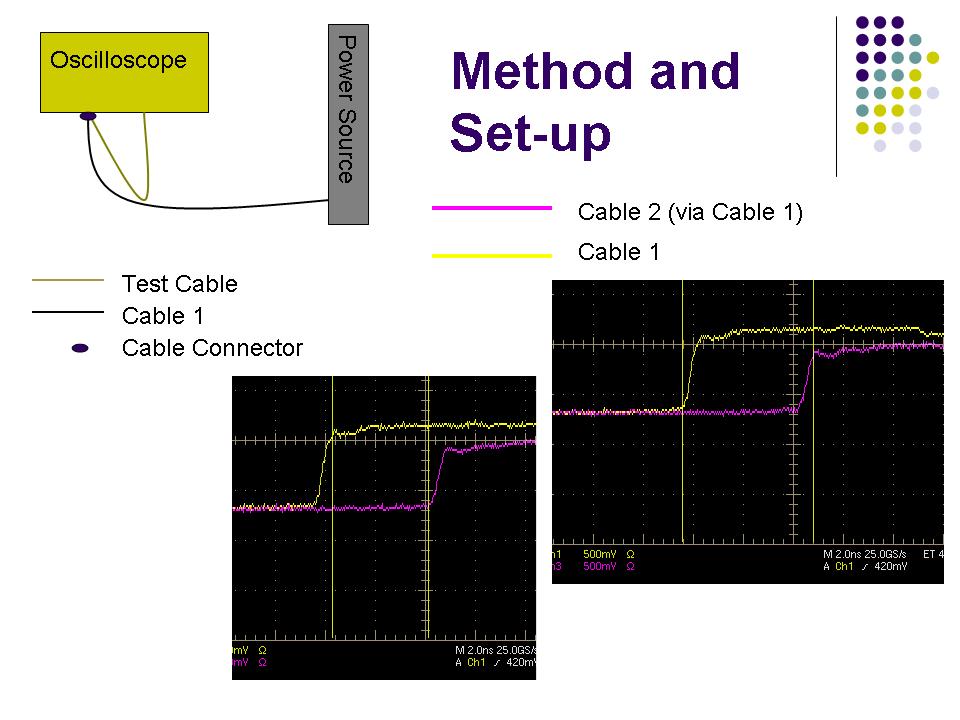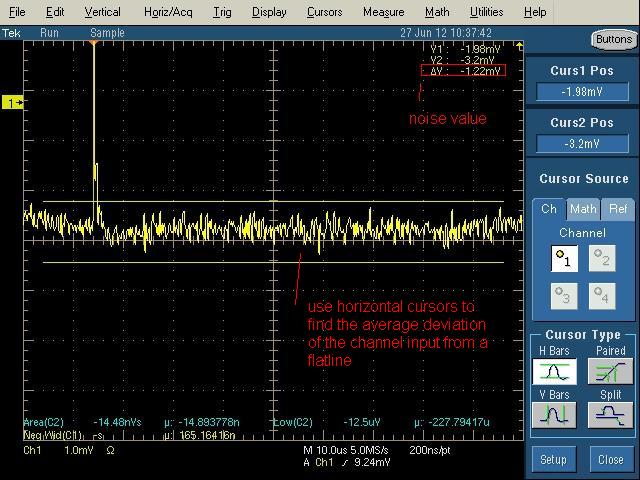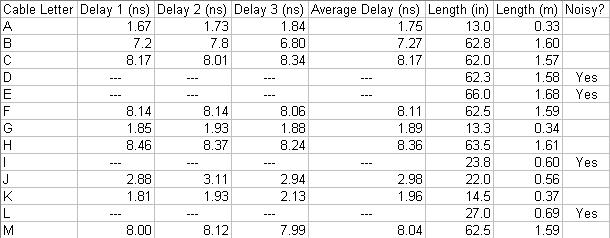Difference between revisions of "MainPage:Nuclear:Summer2012:Cable"
m |
|||
| (7 intermediate revisions by the same user not shown) | |||
| Line 5: | Line 5: | ||
|} | |} | ||
<br> | <br> | ||
| − | + | [[File:Cable Test Stuff.jpg]] | |
| − | [[File:Cable | ||
<br> | <br> | ||
| − | [[File:Cable | + | [[File:Cable Noise.jpg]] |
| + | <br> | ||
| + | <font size='3'> Instructions on finding the noise of a cable. Be sure to also wiggle the connectors at both ends to ensure that all noise is coming from solely the cable and not the connection to the pulser or the oscilloscope. </font> | ||
| + | <br><br> | ||
| + | ---- | ||
| + | <br> | ||
| + | [[File:Cable_Raw_Data.xls]] | ||
| + | <br> | ||
| + | <font size='3'> This spreadsheet shows both raw and processed data from all of the tested cables, despite the file name. It also includes a chart that displays the relation between the length of each of the cables and the delay that they experience, as found using the above-described method. The slope of the graph (as shown by the trend-line equation) represents the approximate speed at which the current passing through the cable is traveling. The units for this slope are meters per nanosecond. The error bars vertically represent the uncertainty in the length measurement while the horizontal error bars are the range of the possible delay. </font> | ||
| + | ---- | ||
<br> | <br> | ||
| − | [[File: | + | [[File:LEMO Cable Data.jpg]] |
<br> | <br> | ||
| − | <font size='3'> | + | <font size='3'> Delay function on scope detected a varying delay on all cables tested. Three samples were taken and averaged to find the overall delay. </font> |
Latest revision as of 15:51, 10 July 2012
| ⇐ Back to Summer 2012 page |
| ⇐ Back to the Main_Page |


Instructions on finding the noise of a cable. Be sure to also wiggle the connectors at both ends to ensure that all noise is coming from solely the cable and not the connection to the pulser or the oscilloscope.
File:Cable Raw Data.xls
This spreadsheet shows both raw and processed data from all of the tested cables, despite the file name. It also includes a chart that displays the relation between the length of each of the cables and the delay that they experience, as found using the above-described method. The slope of the graph (as shown by the trend-line equation) represents the approximate speed at which the current passing through the cable is traveling. The units for this slope are meters per nanosecond. The error bars vertically represent the uncertainty in the length measurement while the horizontal error bars are the range of the possible delay.

Delay function on scope detected a varying delay on all cables tested. Three samples were taken and averaged to find the overall delay.